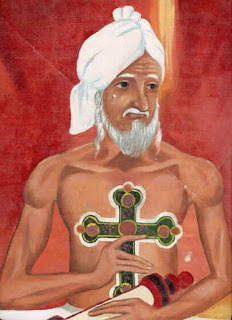With January 1st fast approaching, I was conducting my annual wall calendar search. Among others, I decided to look for calendars that contained artwork by indigenous Christian artists, as I had come across a couple in the past. I found a total of three, and perhaps you might know of more. If so, please share in a comment to this post.
Unfortunately, only two of the following three calendars are available outside of Europe (UPDATE: See note at the end of this post), but I thought I'd mention all three anyway.
The first is "The Guardian of Paradise," the 2013 Papua New Guinea wall calendar by Missio Aachen, a Catholic Mission organization. Through Google ChromeTranslation, the website states that "the focus of the calendar is divine creation and preservation... The pictures in the calendar [reflect the] daily life of the islanders and simultaneously follow the biblical creation story in Genesis." The calendar does not contain boxes for each day of the month, but rather shows one art image with a column or line of dates in small print on the side or at the bottom, as seen on page 3 here.












.jpeg)


































